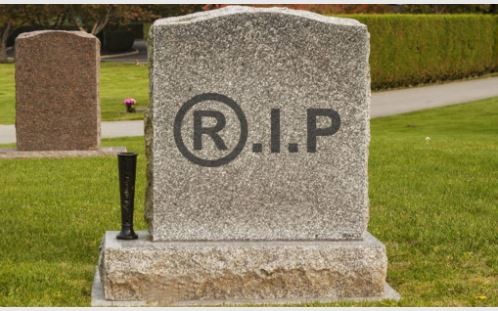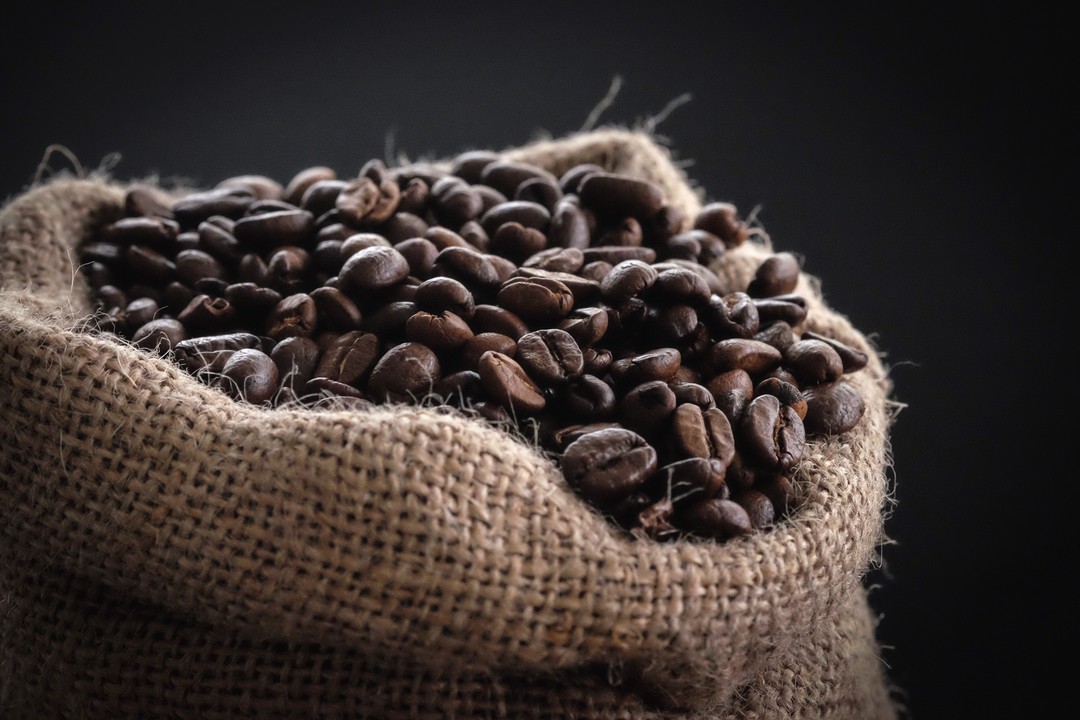
You have had a business idea in mind for a while, and you finally get around to start this whole enterprise. One of the first things to decide on is the name of your brainchild. If all goes well, this can become a household name in a decade. But how do you choose one? A brand name can make or break the business. As a starting point, your brand name should be easy to remember and have a positive connotation. What many entrepreneurs fail to appreciate, however, is the importance of the distinctiveness of your brand name. Distinctiveness ensures, the name stands out from the competition and is even recognised by the relevant public. Even more important is the aspect, that only a distinctive brand can be monopolised for you in form of a registered trade mark, and only this trade mark registration makes it enforceable against anyone who tries to piggyback on your brand’s success. So, if you would like to ensure that you can properly protect your brainchild, give it a distinctive name.
1. Branding
When starting a business, far too many people make the mistake of choosing a trade name that is descriptive of their goods or service that they are offering. Say a person is selling apples in Melbourne, he or she may name the business “Melbourne Apples”. There is a simple rationale. The name “Melbourne Apples” immediately informs the customers of what you are selling. Alternatively, the business may be called “Fresh Apples”. It conveys to the consumers the idea that the apples sold are fresh.
A descriptive brand may seem intuitive at first but is more the exception than the rule for successful businesses. Think of the most recognisable brands worldwide: Nike, Apple, Starbucks, Sony… Very rarely do their trade names describe what their businesses do. In fact, many of these names are entirely made-up. Please bear in mind, that as a commercial matter, effective trade marks convey information about the brand they protect, rather than the goods and services themselves.
In fact, a non-distinctive trade name can be detrimental to your business in two respects. Firstly, consumers are much more likely to recognise brands that are distinctive, as opposed to ones that are purely descriptive. With a generic name like “Melbourne Apples”, it is difficult to build up a reputation as customers are likely to treat it as just a generic fruit business. A generic name also makes it very difficult for customers to locate your business using a search engine.
The second disadvantage is that a descriptive brand could hinder your ability to apply for a registered trade mark. Whilst a registered trade mark is not mandatory for every business, it is the best way for your business to build up a brand and reputation. A registered trade mark gives you the exclusive right to use the trade mark. So for Starbucks, they can prevent other people from calling their cafés Starbucks, Starducks, Buckstar, or any other similar names.
Unfortunately, a descriptive brand often finds it difficult to make its way onto the register. Under the law, a trade mark that is not capable of distinguishing the applicant’s goods or services from the goods or services of other people cannot be registered. This covers trade marks that are descriptive or otherwise generic, such as “Fresh Apples” for apples, “Albany Oranges” for oranges from Albany, or “Cotton Shirts” for shirts made out of cotton.
Of course, there are exceptions. “British Airways”, for example, is entirely descriptive. But for these trade marks to be registered, they need to become distinctive in the minds of consumers, which is often a very high bar for businesses that have only started operating.
As such, for the owner of “Melbourne Apples”, even if they see other “Melbourne Apples” businesses popping up everywhere, they can hardly do anything about it. Most legal action would require the business to have a substantial reputation. They can only passively witness customers walking into other “Melbourne Apples”, perhaps thinking that it belongs to you.
For a trade mark to be accepted for registration, distinctiveness is a condition. On the other hand, under s41(2) of the Trade Marks Act 1995, an application must be rejected, if the trade mark is not capable of distinguishing the applicant’s goods or services from the goods or services of other persons.
his is because, as a matter of policy, a person should not be entitled to privatise and monopolise ordinary English words[1] and to exclude the general public from access[2]. There is a common right of the public to make honest use of words forming part of the common heritage[3].
Distinctiveness can be achieved by choosing:
– certain striking non-descriptive features of the goods[4]
– a name or logo that is inherently adapted to distinguish[5],
– a name or logo that is capable of distinguishing goods and services by a combination of
the inherent adaption of the word or symbol to distinguish the goods and services, the
use or intended use of the word or symbol by the applicant and any other
circumstances,
– a name or a logo is not inherently adapted to distinguish but that does, in fact,
distinguish because of the extent of use of the mark before the filing of the
application[6].
A mark is inherently adapted to distinguish goods or services, as it is used to separate, to mark as different, goods and services from those goods and services of other traders.
The more a word or logo is to describe the goods or services, the less inherently apt it is, to distinguish them as the goods of a particular manufacturer[7]. As such the test of whether a sign is inherently adapted to distinguish is by asking, whether other traders are likely, in the ordinary course of their business and without any improper motive, to desire to use the same mark, or some mark nearly resembling it, upon or in connection with their own goods or services.
Inherently distinctive are meaningless words or meaningless connections, such as artificial and made up words (Mambo or Telstra) or words, used completely used out of their usual context (Apple), as the word used, does not describe in any way the goods or services they are used to serve as their badge of origin. The word “Apple” is not a common description for computers or software.
The trouble with meaningless signs and meaningless connections is that they have no meaning for the relevant public. They are born dead. You need to do a lot of work to bring a brand to life, by convincing the relevant public about the quality of your goods and services, so a link is built between the meaningless term and your goods and services. A strategy to boost this brand development process could be to create a brand name that both conveys some information about the goods and services, by being elusive, but still has the capacity to distinguish. Examples are names from Greek and Roman mythology like “Herkules”, “Ajax” or “Venus”, which refer to features of the person, which the brand owner wishes to use as a short-hand description of their product.
A descriptive word, slogan or person’s name that is not inherently adapted to distinguish, can become a distinctive sign if it is used in combination with swirly calligraphy or a distinctive logo. The word itself cannot be registered as a trade mark, but the combined sign, the word and the device in combination can be registered as a composite trade mark, as the combination is distinctive.
As a combination of inherent distinctiveness and use an abbreviation such as Westpac (short for Western Pacific) the otherwise descriptive word can acquire a secondary meaning. The mere fact that a word is descriptive or has a descriptive flavour, does not necessarily prevent it from being distinctive for certain goods or services. There must be a sufficient degree of distinctiveness to counterbalance the descriptive character of the word. A word which is prima facie descriptive may become distinctive in connection with the particular goods and yet retain its descriptive meaning. The word must, in order to become distinctive, have a new and secondary meaning, different from its primary descriptive one and thus cease to be purely descriptive[8].
But even in the event, your brand is not “inherently adapted to distinguish” goods and services, as it consists wholly of a sign, that is ordinarily used to indicate the kind, quality, quantity, intended purpose, value, geographical origin or some other characteristics of goods and services, as well as the time of production of goods or of the rendering of services, there is a chance to achieve registration through extensive use of your brand.
Use of your brand name might help you over the hurdle when being provisionally refused for alleged descriptiveness or brand name or logo, Under s41(5) and s41(6) of the Trade Marks Act 1995, in cases where a sign which is in part inherently adapted to distinguish does or will acquire a secondary meaning through use or intended use.
In applications under s41(6) Trade Marks Act 1995 where the sign is not inherently adapted to distinguish at all, the evidence is critical in that it is a question of fact, whether the sign does, in fact, distinguish goods and services. Evidence of use comprises of all specimen, bearing the mark, including but not limited to invoices, letterheads and envelopes, contractual documents, sample agreements containing the brand owner`s trade mark, merchandising articles, such as clothing, apparel and accessories or online Internet marketing materials, namely website, testimonials from customers and reviews depicting the brand, social media platform accounts, such as a brand presence on Facebook and Instagram.
2. Use It or Lose It!
Having achieved registration of your mark, it is important that you commence using the mark in commerce. Put it simply. If you do not use it, you will lose it, as the Trade Marks Act 1995 in Australia, as well as other Trade Mark laws around the globe contain grounds for cancellation of registered trade marks, based on their non-use in commerce. This is to prevent anyone from “blocking” the trade mark registers by submitting applications for marks when no intention to use them ever exists.
“Use as a trade mark” means that a sign is used to indicate the trade origin, namely to distinguish one person’s goods and services from those of the competitors. This applies, where a sign is used to indicate a connection in the course of trade between its owner and the owner’s goods and services, offered to the relevant public.
Immediately after filing of you trade mark application, commence using your brand name or logo or combination by placing ™ on it. Once the application matures into a registration, simply reply ™ by ®, which stands for registered trade marks.
Now that you understand the importance of a distinctive brand name, all the best to you for coming up with one in a Eureka moment.
But do not forget – “First come first served” applies for trade marks. The filing is key. Do not wait to register your brand name as a trade mark until you earned “enough money to afford it”. Trade mark protection is a direct investment in your business. If you hesitate to file an application, competition does not sleep. Once any third party managed to file an application for an identical or even similar name or logo, you must not use your name or logo and go back to the drawing board.
Protection of your intangible assets is inevitable.
[1] Data Access Corp v Powerflex Services Pty Ltd (1999) 202 CLR 1.
[2] Cozens-Hardy M.R. from Joseph Crossfield & Sons Ltd’s Appn (19909) 26 RPC 837 at 854.
[3] Clark Equipment Co v Registrar of Trade Marks (1964) 111 CLR 511; T.G.I. Friday’s Australia Pty Ltd v TGI Friday’s (2000) 48 IPR 513.
[4] Coca-Cola Co v All-Fect Distributors Ltd (1999) 47 IPR 481.
[5] Unilever Australia Limited v George Karounos and Sabre International Limited (2001) 52 IPR 361, para 44.
[6] s41(6) of the Trade Marks Act 1995.
[7] Clark Equipment Co v Registrar of Trade Marks (1964) 111 CLR 511.
[8] Johnson & Johnson Australia Pty Ltd v Sterling Pharmaceuticals Pty Ltd (1991) 30 FCR 326 at 335-36.












